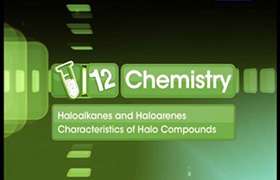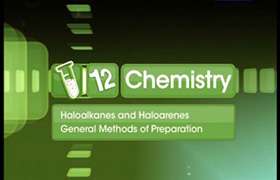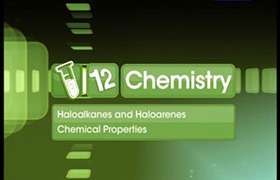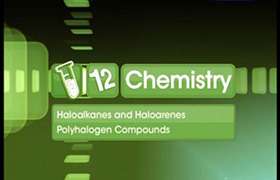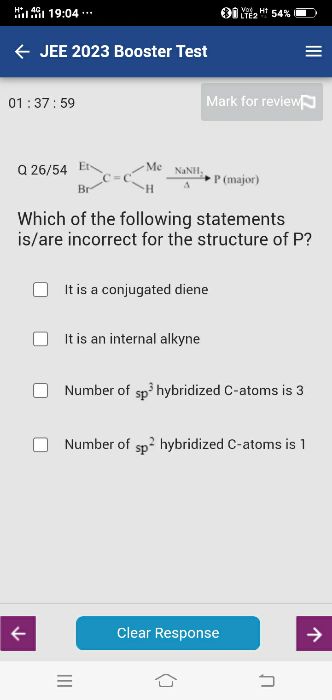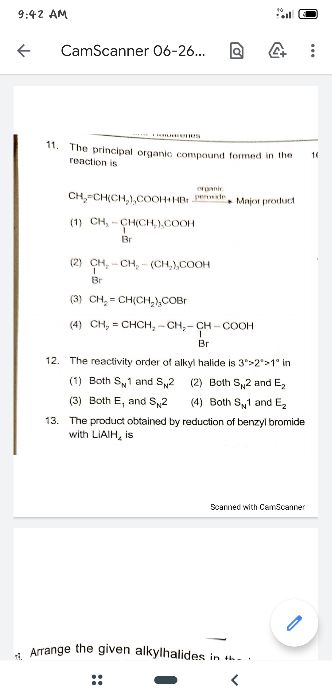CBSE Class 12-science Answered
write a short note on any 2 polyhalogen compounds
Asked by Aarushi - | 13 Feb, 2012, 09:10: PM
Chloroform:
It is an important trihalogen derivative of methane. It was discovered by Liebig in 1831 and its name chloroform was proposed by Dumas as it gave formic acid on hydrolysis. In the past, it was extensively used as anaesthetic for surgery but now it is rarely used as it causes liver damage.
(1) Preparation
(i) Chloroform is prepared both in the laboratory and on large scale by distilling ethyl alcohol or acetone with bleaching powder and water. The yield is about 40%. The available chlorine of bleaching powder serves both as oxidising as well as chlorinating agent.
CaOCI2 + H2O ? Ca (OH)2 + CI2 Bleaching powder
(a) From alcohol
[ Cl2 + H2O ? 2HCl + O ]
CH3 CH2 OH + O ? CH3 CHO + H2O
Ethylacohol Acetaldehyde
CH3 CHO + 3CI2 ? CCI3 CHO + 3HCI
Acetaldehyde Chloral
Freons
The chloro fluoro derivatives of methane and ethane are called freons. Some of the derivatives are: CHF2Cl (monochlorodifluoromethane), CF2Cl2 (dichlorodifluoro-methane), HCF2CHCl2 (1,1-dichloro-2,2-difluoroethane). These derivatives are non-inflammable, colourless, non-toxic, low boiling liquids. These are stable upto 550°C. The most important and useful derivative is CF2Cl2 which is commonly known asfreon and freon-
12. Freon or freon-12 (CF2Cl2) is prepared by treating carbon tetrachloride with antimony trifluoride in the presence of antimony pentachloride as a catalyst.
SbCl3
3CCl4 + 2SbF3 ? 3CCl2F2 + 2SbCl3
Catalyst
Or it can be obtained by reacting carbon tetrachloride with hydrofluoric acid in presence of antimony pentafluoride.
SbF5
CCl4 + 2HF ? CCl2F2 + 2HCl
Under ordinary conditions freon is a gas. Its boiling point is 29.8°C. It can easily be liquified. It is chemically inert. It is used in air-conditioning and in domestic refrigerators for cooling purposes (As refrigerant). It causes depletion of ozone layer.
Answered by | 14 Feb, 2012, 09:42: AM
Application Videos
Concept Videos
CBSE 12-science - Chemistry
Asked by roshanisharma200611 | 07 Feb, 2024, 01:18: PM
CBSE 12-science - Chemistry
Asked by surajbhanupatro44 | 07 Nov, 2023, 12:01: AM
CBSE 12-science - Chemistry
Asked by mayamishra9540500880 | 04 Jul, 2022, 07:11: PM
CBSE 12-science - Chemistry
Asked by harshaldpathak | 11 Jun, 2022, 05:37: PM
CBSE 12-science - Chemistry
Asked by pratikmishra8 | 25 Apr, 2022, 07:15: AM
CBSE 12-science - Chemistry
Asked by bajrangijaiswal9001 | 07 Feb, 2022, 11:58: AM
CBSE 12-science - Chemistry
Asked by jaiadithya05 | 20 Sep, 2021, 07:20: PM
CBSE 12-science - Chemistry
Asked by surekhas66675 | 02 Sep, 2021, 05:17: PM
CBSE 12-science - Chemistry
Asked by shantasharma611 | 01 May, 2021, 01:51: PM


